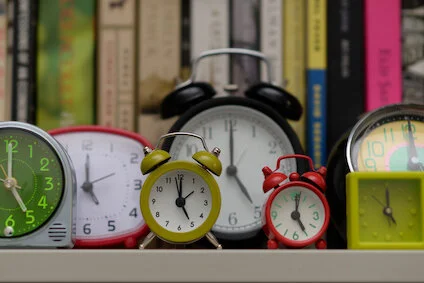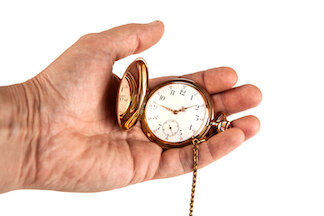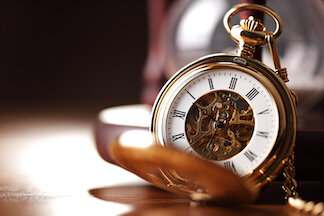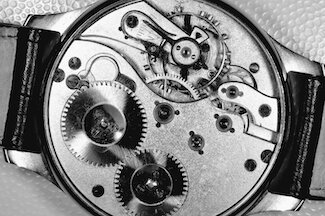Time is the way we measure how long things take to happen.
We measure the spaces in time between things happening.
We use seconds, minutes and hours to measure time.
Clocks are the machine that help us measure time.
We also measure time in days, weeks and months.
Why we measure time
A clock with a digital display ©iStock
We measure time to mark the beginning and end of events. We also measure the time between events. This helps us to put dates on moments and to tell which events happened before other events.
We use clocks and watches to measure time.
* The clocks, and the portable clocks that we carry around, which we call watches, are the instruments that measure and show the current time on their faces or digital displays.
* They are regular and constant (always there) and enable us to keep track of time wherever we might be.
* They help keep us on time for school, a visit to the movies and other events in our lives.
*A timetable is a list that tells when things will happen. There are timetables for trams, buses and trains. Your school has a timetable that lets you know when classes begin and end, when it’s time for lunch and time to go home.
A wrist watch is a portable clock that tells us the time ©iStock
A clock divides time into hours, minutes and seconds.
60 seconds make a minute,
60 minutes make an hour,
24 hours make a day.
365 days make a year.
Wrist watches and most clocks show only 12 hours. This means that the hour hand has to go around twice to show time for a whole 24 hour day. Once from midnight to 12 o’clock (am) and from 12 o’clock midday until midnight (pm)
A digital display on a clock and on some watches can show 24 hours.
This digital displays the time for the 23rd hour of the day. It is the same as 11 o’clock at night.©iStock
We use a calendar to organise the days and months
A calendar helps us to organise events such as birthdays and holidays ©iStock
A calendar gives names to the 365 days of the year and divides then into months and years. We use the calendars to record dates and as a way to remind us of dates planned for the future.
Did you know?
The English word “clock” comes from the Celtic words clocca and clogan, both which mean “bell”.
Our word calendar comes from a word in Latin, kalendae, which was the Latin name of the first day of every month.
How did people measure time before there were clocks?
In ancient times people measured time by looking at the position of the sun in the sky. If the sun was low in the sky after night it was morning or before noon. If it was high above it was noon. After that, as the sun began get lower in the sky and ready to set, it was afternoon. Then it was night again. They also used the changes in the seasons to tell the time of the year.
Early inventions to measure time
They is an ancient Roman sundial. ©iStock
The Ancient Egyptians wanted to measure time more accurately. They invented shadow clocks or sundials which divided the time between sunrise and sunset into pieces of time that they called the hours. The length of the shadow on the sundial was different at different times of the day.
But what if the sun wasn’t shining? Or if it was night time?
The Romans had water clocks that used the flow of water to measure time. A container was filled with water and then the water was allowed to leak slowly and evenly out of the container. Markings on the container showed the passing of time. Now it was possible to measure time when there was no sun, to measure it indoors and at night. The ancient Greeks also made water clocks and used them to measure the time a speaker was allowed to talk in a law court.
Oil lamps and candle clocks
Candle and oil lamp clocks measured the time between events ©iStock
By measuring the level of oil in oil lamps people were able to measure how much time has passed. Candles with markings on them are able to measure how much time had passed between one event an another. The first candle clocks were used in China thousands of years ago.
Hourglass or sandglass
In an hourglass or sandglass, fine sand pours through a tiny hole at a constant rate. The sand passes from one of the two connected glass bulbs. Once the top bulb is empty it can be turned upside down to begin timing again. They can’t tell the time of the day, but they measure the passing of time.
Mechanical clocks
Pendulum clock
A Pendulum is a weight suspended from a fixed point. It swings back and forth at a constant rate.
The first clock to use a pendulum was built by a Dutch scientist, Christiaan Huygens in 16765.
A grandfather clock is a pendulum clock ©iStock
Inside a pendulum clock, a mechanism of gears is used to keep the pendulum swinging and the hands on the clock face moving. Inside a grandfather clock the pendulum swings once every two seconds. Tick, tock!
The energy to drive the pendulum clock comes from the weights as they fall, being drawn downwards by gravity.
As it swings, gears which are wheel with teeth move the hands on the clock face.
Read more about Grandfather clocks here
https://electronics.howstuffworks.com/
gadgets/clocks-watches/clock.htm
Inside smaller pendulum clocks, there is a spring that provides the energy to drives the mechanism. The springs need regular winding, with a key, to keep the gears ticking by at a regular interval.
You can see some of the gears that drive the clock behind the clock face. © iStock
A key is used to wind the spring that gives the energy needed to drive the gears and keep the pendulum moving. © iStock
Inside this pendulum clock there is a spring that provided the energy to keep the gears and the pendulum moving. ©iStock
Early watches needed to be wound too.
Pocket watches were often carried on a chain. They were inside a case that closed, to protect the clock face.
Early watches had a spring that had to be wound to provide the energy to keep the clock working. Pocket watches were wound up using the winding knob on the top, or on the side of the watch.
Here is the inside of a wind-up alarm clock. Can you see the winding knob, and the two handles for setting the hands on the clock. ©iStock
It is always a good idea to use more than one source of information, so here are some others for you to investigate
Go here to read about a wind-up alarm clock
https://electronics.howstuffworks.com/gadgets/clocks-watches/inside-clock.htm
And go here to see a video of how a mechanical wind-up watch works.
https://youtu.be/9_QsCLYs2mY
Electric clocks and watches
An electric clock uses electricity as the source of energy to keep the clock running. Electricity replaced the need for mechanical energy produced by a hanging weight or a mainspring. Experimental electric clocks were made around 1840, it wasn’t until mains electric power became available in the 1890s that the first battery electric clock, driven by a spring and a pendulum was available by 1918. These clocks used an electrical impulse to operate a number of dials, and gears that moved the hands of the clock. They soon became popular and were found in many homes.
The next kind of clock and watches used quartz crystals
A quartz crystal and a battery are used to run this clock. ©iStock
The first clock to use a quartz crystal was built in 1927.
The first battery powered watch, which never need winding was The Hamilton 500. It was never popular because the battery didn’t last long and had to changed frequently.
The first quartz watch was a Seiko in 1969.
A battery being put into a quartz watch ©iStock
In a quartz watch a battery sends electricity to a quartz crystal through an electronic circuit. The quartz vibrates quickly and at a regular pace which keeps the mechanism moving in a precise way. Quartz watches are very accurate at telling the tim
Quartz watches are used in mobile phones, oven timers, and computers.
Atomic clocks
Atomic clocks keep better time than any other clock. They make GPS navigation work, they keep the Internet working, and they are used to accurately to pin point the location of the planets so that spacecraft can be launched.
An atomic clock is a device that measures time using the microwave signal emitted by atoms – or the electrons in atoms – when they ‘jump’ back and forth. This is the energy source that works the clock. Atomic clocks measure the actual length of a second, so they are the most accurate time keepers in the world.


















